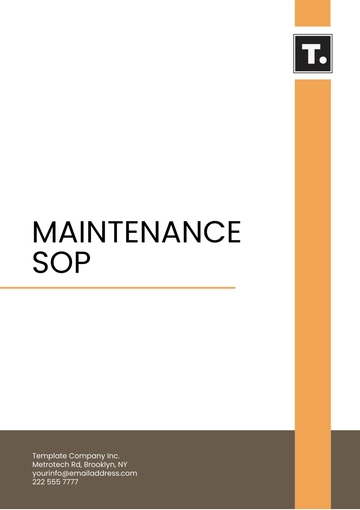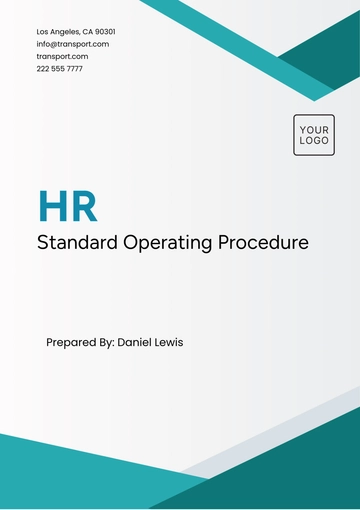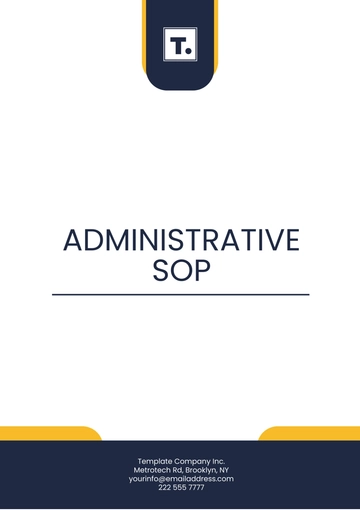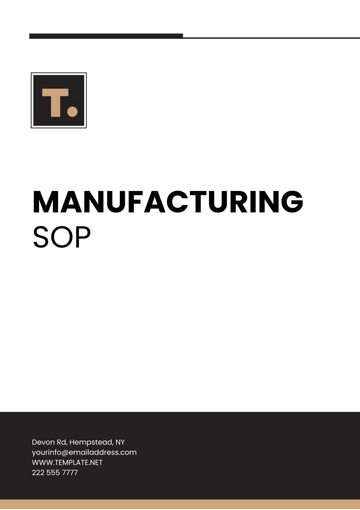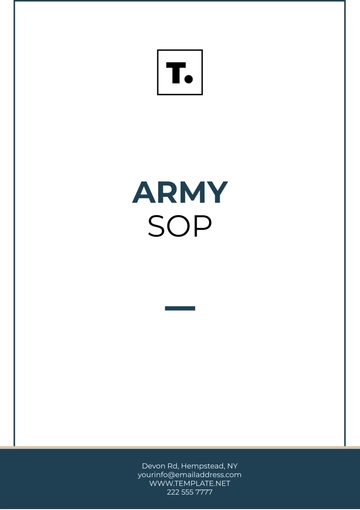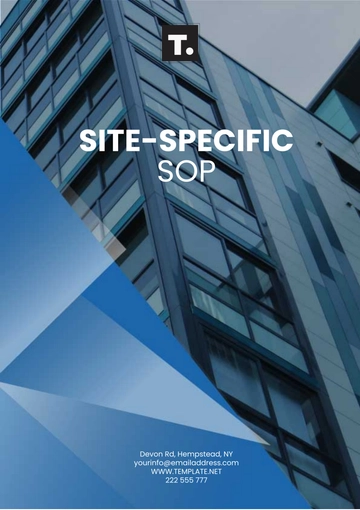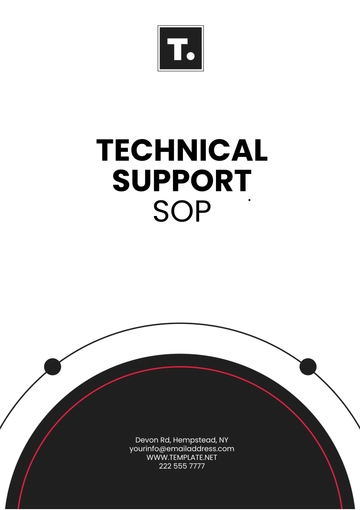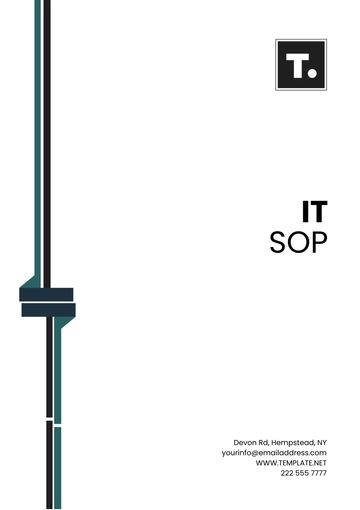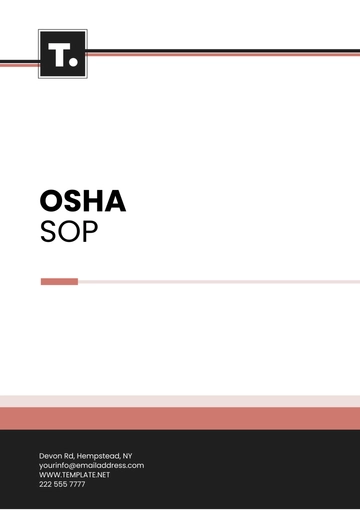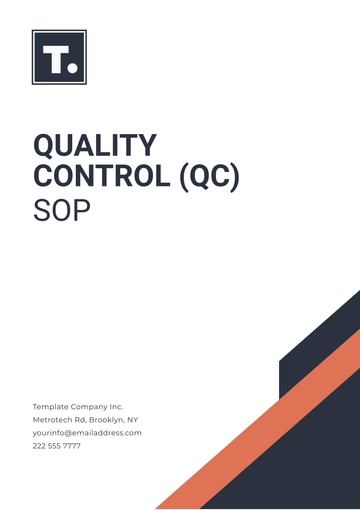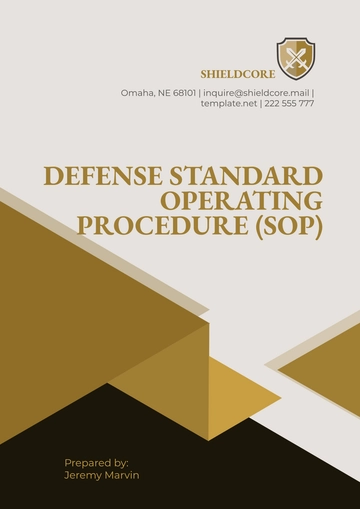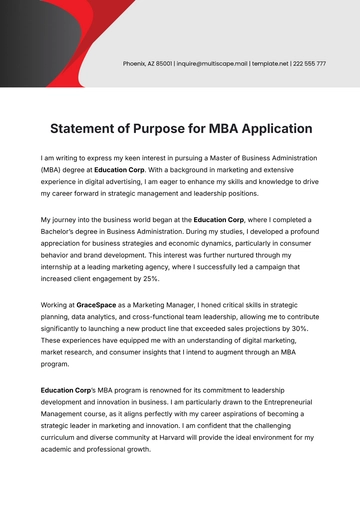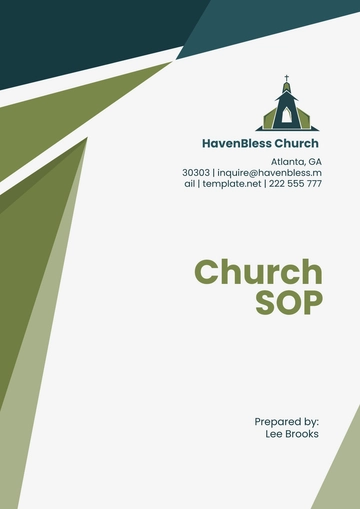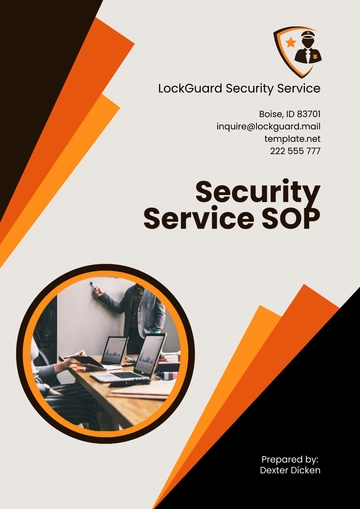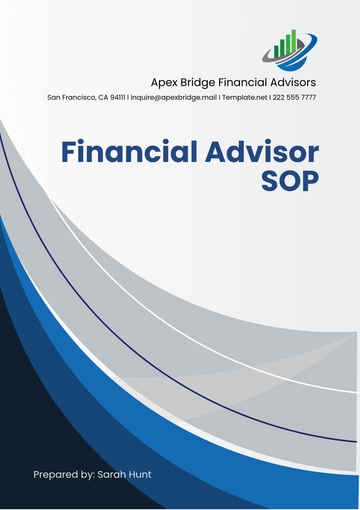Free Printable Church Facility Management SOP
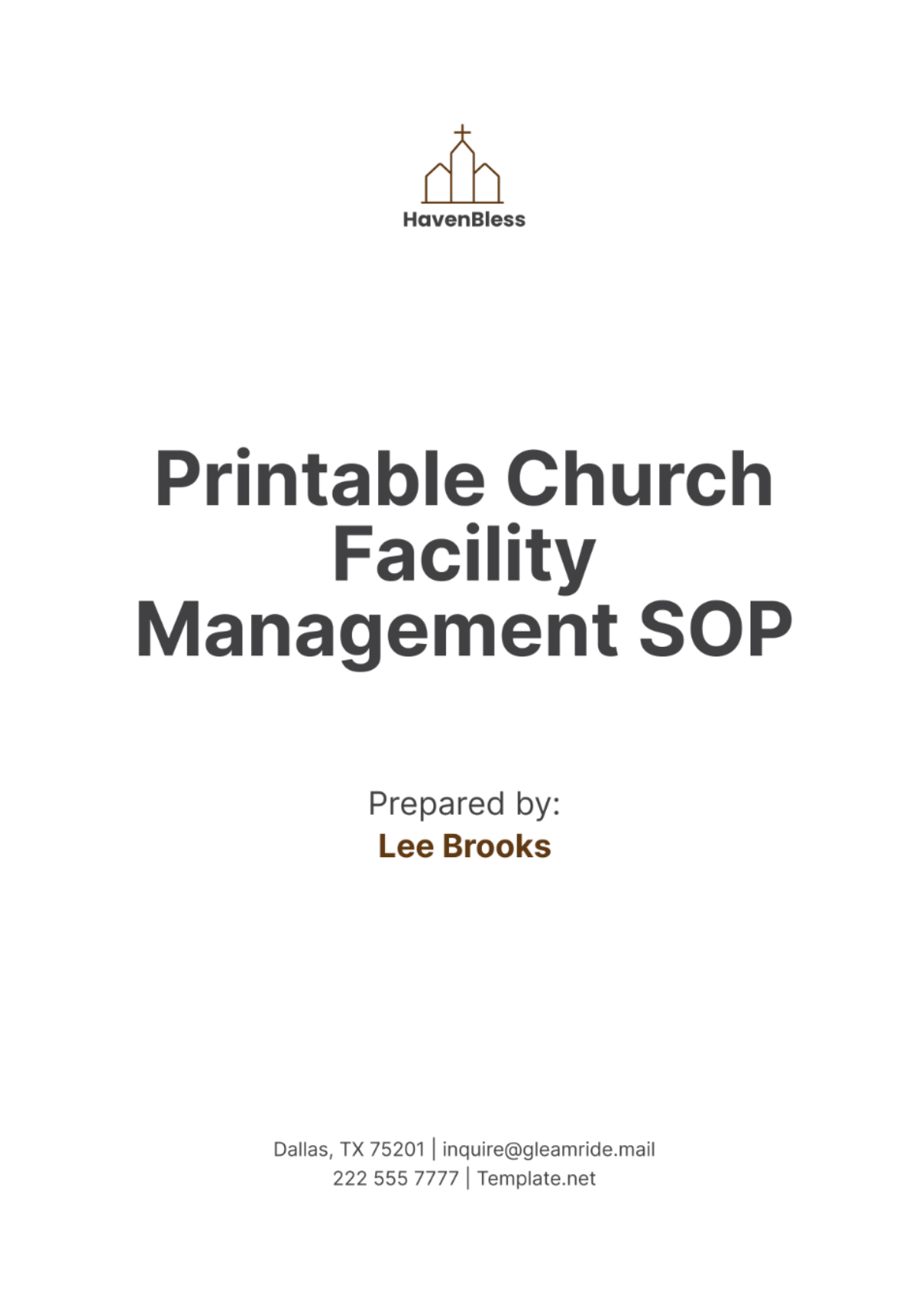
I. Introduction
A. Purpose
The purpose of [Your Company Name]'s Printable Church Facility Management SOP is to establish clear guidelines and procedures for the effective management and maintenance of church facilities. By defining standard practices, this SOP aims to ensure a safe, clean, and welcoming environment for worship and community activities. The SOP also seeks to streamline facility operations, improve communication, and enhance overall efficiency in managing church spaces.
B. Definitions
Facility Manager: The Facility Manager oversees daily operations, maintenance, and safety of the church facilities, coordinates with staff, manages budgets, and handles emergencies.
Preventive Maintenance: Preventive maintenance involves routine tasks to prevent equipment failures and extend asset lifespan, including inspections, servicing, and replacements per manufacturer guidelines and historical data.
Emergency Procedures: Emergency procedures are actions and protocols for handling emergencies like fires, medical incidents, or security threats to ensure safety and protect church property.
C. Overview of Church Facilities
Description of Facilities: This SOP covers the main church building (sanctuary, halls, classrooms), offices, storage, and outdoor areas (parking lots, gardens), each with specific maintenance and operational requirements.
Organizational Structure: The church facilities management team includes the Facility Manager, maintenance staff, volunteers, and leadership, ensuring clear responsibilities and effective facility management.
II. Roles and Responsibilities
A. Facility Manager
General Duties: The Facility Manager oversees all facility operations, such as maintenance, repairs, and safety, manages budgets, coordinates with staff, ensures regulatory compliance, handles emergency response plans, and manages vendor relationships.
Reporting Structure: The Facility Manager reports to the Church Board or its leadership, updating them on facility conditions, maintenance, and issues, ensuring alignment with church goals.
Coordination: The Facility Manager collaborates with departments, teams, and external parties to address facility concerns and ensure smooth church operations.
B. Maintenance Staff
Duties: Maintenance staff clean, repair, and maintain church facilities, report major issues to the Facility Manager, and keep maintenance records.
Scheduling: Maintenance staff follow a set schedule of daily, weekly, and monthly tasks to ensure timely and organized completion.
Communication: Maintenance staff must effectively communicate with the Facility Manager and team about maintenance issues and updates, and attend regular meetings on facility needs and improvements.
C. Church Leadership
Oversight: Church leadership guides and oversees the Facility Manager to ensure facility practices align with church values, including approving major projects, budgets, and improvements.
Approval Process: Major repairs, upgrades, and budget decisions need church leadership approval to ensure they're reviewed and endorsed.
Communication: Church leadership acts as a liaison between the Facility Manager and the congregation, addressing concerns and keeping the community informed about facility issues and updates.
D. Volunteers
Roles: Volunteers help with event setup, minor repairs, and general upkeep, ensuring the church is well-maintained for all activities.
Training: Volunteers receive training on safety procedures, facility use guidelines, and specific tasks they will be performing. This training ensures that they are equipped to handle their responsibilities effectively and safely.
Supervision: Volunteers are overseen by the Facility Manager or staff to ensure tasks meet standards and issues are promptly addressed, maintaining quality and consistency.
III. Facility Maintenance
A. Routine Maintenance
Daily Tasks
Daily maintenance tasks include cleaning high-traffic areas such as lobbies, restrooms, and kitchens, as well as inspecting facilities for any immediate issues that require attention. Ensuring that these areas are clean and functional is essential for maintaining a welcoming environment.
Weekly Tasks
Weekly tasks involve more thorough cleaning, such as vacuuming carpets, washing windows, and sanitizing surfaces in less frequently used areas. This routine helps maintain a high level of cleanliness and addresses wear and tear from regular use.
Monthly Tasks
Monthly maintenance tasks include inspecting and servicing HVAC systems, checking plumbing for leaks, and performing preventative maintenance on major appliances. These tasks are designed to identify and address potential issues before they become significant problems.
B. Preventive Maintenance
Inspection Routines
Regular inspections of electrical systems, HVAC units, and structural elements are conducted to identify potential issues before they cause failures. These inspections help ensure that all systems are operating efficiently and safely.
Maintenance Checklists
Detailed checklists are used to track preventive maintenance activities and ensure that all necessary tasks are completed. These checklists help maintain consistency and provide a record of maintenance efforts.
Scheduling
Preventive maintenance activities are scheduled based on manufacturer recommendations, historical data, and operational needs. This scheduling helps to avoid disruptions and ensures that all equipment and systems remain in good working order.
C. Repairs and Upgrades
Request Process
Maintenance and repair requests are submitted through a formal process that includes providing details about the issue, its location, and its urgency. This process helps prioritize and address maintenance needs effectively.
Approval and Documentation
Major repairs and upgrades require approval from church leadership. All repair and upgrade activities are documented, including the work performed, costs incurred, and any follow-up actions needed.
Tracking
Maintain a log of all repair and upgrade activities to track progress and ensure that all issues are addressed in a timely manner. This tracking helps manage budgets and provides a record of facility improvements.
IV. Safety and Security
A. Emergency Procedures
Fire Safety
Regularly test fire alarms and ensure that fire extinguishers are in working condition. Conduct fire drills to familiarize staff and congregants with evacuation procedures and ensure everyone knows how to respond in case of a fire.
Evacuation Plans
Clearly post evacuation routes and emergency exits throughout the facility. Ensure that all staff, volunteers, and regular users of the facility are familiar with these routes and procedures.
Emergency Contacts
Maintain an updated list of emergency contacts, including local emergency services and key personnel within the church. This list should be easily accessible in case of an emergency.
B. Security Measures
Access Control
Implement and manage access control systems to restrict entry to authorized personnel only. This includes issuing keycards, managing access codes, and ensuring that unauthorized individuals cannot access sensitive areas.
Surveillance
Install and maintain surveillance cameras at key locations around the facility. Regularly review footage to monitor security and address any potential concerns.
Security Protocols
Develop and enforce security protocols to handle various scenarios, such as unauthorized access or suspicious activities. Ensure that all staff and volunteers are trained in these protocols.
C. Incident Reporting
Reporting Procedures
Establish a clear process for reporting incidents, including accidents, security breaches, and any other unusual occurrences. Ensure that reports are submitted promptly and include all relevant details.
Follow-up Actions
Investigate reported incidents to determine the cause and implement corrective actions as needed. Document the results of investigations and any changes made to prevent future occurrences.
Communication
Communicate the outcome of incident investigations to relevant stakeholders, including staff and church leadership. Ensure that any lessons learned are incorporated into facility management practices.
V. Equipment and Supplies Management
A. Inventory Management
Tracking
Use a digital inventory system to track all equipment and supplies. Regularly update inventory records to reflect new purchases, usage, and disposals.
Audits
Conduct periodic audits of inventory to verify accuracy and ensure that all items are accounted for. Address any discrepancies promptly to maintain accurate records.
Reordering
Monitor inventory levels and reorder supplies as needed to prevent shortages. Establish a process for reviewing and approving purchase orders.
B. Equipment Maintenance
Maintenance Schedules
Develop and follow maintenance schedules for all major equipment, such as HVAC systems, kitchen appliances, and audio-visual equipment. Ensure that maintenance is performed regularly to prevent breakdowns and extend equipment life.
Inspections
Perform routine inspections of equipment to identify potential issues before they become major problems. Document inspection results and schedule repairs as needed.
Service Contracts
Where applicable, maintain service contracts with vendors for regular maintenance and emergency repairs. Review and renew contracts periodically to ensure that they meet the facility’s needs.
C. Supplies Management
Storage
Store supplies in designated areas that are clean, organized, and accessible. Ensure that storage conditions are appropriate for the types of supplies being stored.
Usage Tracking
Monitor usage of supplies to manage costs and identify any patterns or issues. Adjust inventory levels based on usage trends to maintain an efficient supply system.
Disposal
Implement procedures for the safe and environmentally responsible disposal of used or expired supplies. Ensure compliance with any relevant regulations and guidelines.
VI. Facility Use and Scheduling
A. Reservation Procedures
Request Process
All facility reservation requests must be submitted through a formal request form, detailing the event type, date, time, and required space. The request form is reviewed by the Facility Manager to ensure availability and compatibility with existing schedules.
Approval
Reservations are approved based on availability and alignment with church policies. The Facility Manager will confirm approval via email or written notice, outlining any special instructions or requirements for the event.
Cancellation
In the event of a cancellation, the requesting party must provide notice as per the church’s cancellation policy. Refunds or rescheduling options are handled according to established guidelines.
B. Event Setup and Takedown
Setup Guidelines
Prior to events, coordinate with the requesting party to determine setup requirements, including furniture arrangement, audio-visual equipment, and decorations. The Facility Manager oversees setup to ensure compliance with safety standards and event specifications.
Takedown Procedures
Post-event takedown includes dismantling any temporary setups, returning furniture to its original arrangement, and cleaning the area. Maintenance staff or volunteers are responsible for ensuring the space is left in good condition.
Inspection
After takedown, conduct an inspection to ensure the facility is ready for the next use. Address any damages or issues that may have occurred during the event.
C. Facility Usage Policies
Rules and Regulations
All users must adhere to facility usage policies, including restrictions on alcohol, smoking, and inappropriate behavior. Policies are communicated to all reservation parties and enforced by the Facility Manager and staff.
Supervision
Events must be supervised by designated staff or volunteers to ensure compliance with facility policies and safety procedures. This includes monitoring event activities and addressing any issues that arise.
Liability
The church is not liable for any damages or injuries occurring during facility use. Users are required to provide proof of insurance or sign a waiver if their event poses potential risks.
VII. Financial Management
A. Budgeting
Annual Budget
Develop an annual budget for facility management that includes allocations for maintenance, repairs, utilities, and staffing. The budget is reviewed and approved by church leadership.
Expense Tracking
Track all facility-related expenses against the approved budget. Use financial software to monitor expenditures and ensure that spending stays within budgetary limits.
Reporting
Provide regular financial reports to church leadership, detailing budget performance, variances, and any anticipated adjustments. These reports help ensure transparency and informed decision-making.
B. Cost Management
Expense Control
Implement cost-control measures to manage expenses effectively, such as negotiating vendor contracts and seeking competitive bids for major repairs. Regularly review expenditure reports to identify opportunities for savings.
Maintenance Costs
Monitor and manage maintenance costs to prevent overspending. Prioritize maintenance activities based on urgency and impact on facility operations.
Utility Management
Track utility usage and implement conservation measures to reduce costs. Regularly review utility bills and address any discrepancies or excessive usage.
C. Vendor Management
Selection Process
Select vendors based on their reliability, cost-effectiveness, and quality of service. Obtain and review multiple quotes for significant projects and repairs to ensure competitive pricing.
Contracts
Establish clear contracts with vendors that outline scope of work, payment terms, and performance expectations. Ensure contracts are reviewed and approved by church leadership.
Performance Evaluation
Regularly evaluate vendor performance to ensure that services meet the agreed-upon standards. Address any issues with vendors promptly and make changes if necessary.
VIII. Communication and Reporting
A. Internal Communication
Staff Meetings
Hold regular staff meetings to discuss facility management issues, upcoming events, and any operational concerns. Use these meetings to provide updates and address questions from the team.
Bulletins and Notices
Use internal bulletins and notices to communicate important information related to facility usage, maintenance schedules, and safety updates. Ensure that all staff and volunteers are informed of relevant changes.
Feedback Mechanism
Implement a feedback mechanism for staff and volunteers to report issues or provide suggestions related to facility management. Review feedback regularly to identify areas for improvement.
B. External Communication
Congregation Updates
Provide regular updates to the congregation regarding facility status, major repairs, or changes to facility policies. Use church newsletters, announcements, or social media to keep the community informed.
Community Relations
Maintain positive relations with the local community by addressing any concerns or issues related to facility use. Engage with community members and organizations to foster goodwill and collaboration.
Media Inquiries
Handle media inquiries related to facility management with care. Ensure that all communication is consistent with church policies and approved by church leadership.
C. Reporting
Incident Reports
Document and report any incidents, accidents, or security breaches that occur on the premises. Ensure that incident reports are completed promptly and submitted to church leadership for review.
Maintenance Reports
Generate regular maintenance reports detailing completed tasks, ongoing issues, and upcoming needs. Use these reports to track maintenance activities and inform budgetary decisions.
Facility Performance
Provide periodic reports on overall facility performance, including usage statistics, cost management, and any notable improvements or challenges. These reports help assess the effectiveness of facility management practices.
IX. Environmental and Sustainability Practices
A. Waste Management
Recycling Programs
Implement recycling programs for paper, plastic, glass, and other recyclable materials. Provide clearly labeled bins throughout the facility to encourage proper disposal and reduce waste sent to landfills.
Waste Reduction
Promote waste reduction strategies such as minimizing single-use items, using reusable materials, and composting organic waste. Educate staff and congregation members about best practices for reducing waste.
Disposal Procedures
Follow environmentally responsible disposal procedures for non-recyclable and hazardous materials. Ensure that waste disposal complies with local regulations and guidelines.
B. Energy Conservation
Efficiency Measures
Implement energy-efficient measures such as LED lighting, programmable thermostats, and energy-saving appliances. Regularly review energy usage to identify areas for improvement.
Building Insulation
Maintain proper building insulation to reduce heating and cooling costs. Inspect insulation regularly and address any issues that may affect energy efficiency.
Conservation Policies
Establish and enforce energy conservation policies, such as turning off lights and equipment when not in use. Encourage staff and congregation members to practice energy-saving habits.
C. Water Management
Water Usage
Monitor water usage and implement measures to reduce consumption, such as low-flow fixtures and efficient irrigation systems. Regularly check for leaks and address them promptly.
Conservation Practices
Promote water conservation practices, such as limiting the use of water for landscaping and using drought-resistant plants. Educate the church community about the importance of water conservation.
Maintenance
Conduct regular maintenance of plumbing systems to prevent leaks and inefficiencies. Schedule inspections and repairs to ensure optimal performance and prevent water waste.
X. Training and Development
A. Staff Training
Onboarding
Provide comprehensive onboarding training for new staff members, covering facility management procedures, safety protocols, and job-specific responsibilities. Ensure that new hires are familiar with all aspects of their role.
Ongoing Training
Offer ongoing training opportunities for staff to keep them updated on new procedures, technologies, and best practices. Encourage participation in relevant workshops and seminars.
Performance Evaluation
Conduct regular performance evaluations to assess staff competencies and identify areas for improvement. Use evaluations to provide constructive feedback and set development goals.
B. Volunteer Training
Orientation
Provide orientation sessions for volunteers to introduce them to facility management practices, safety procedures, and their specific roles. Ensure that volunteers understand their responsibilities and the expectations for their involvement.
Skill Development
Offer training sessions to help volunteers develop relevant skills, such as basic maintenance tasks, event setup, and emergency response. Provide resources and support to enhance their effectiveness.
Safety Training
Train volunteers on safety protocols and emergency procedures to ensure they can respond appropriately to any incidents. Regularly review safety practices and update training as needed.
C. Continuing Education
Industry Updates
Stay informed about industry trends, new technologies, and best practices in facility management. Incorporate relevant updates into training programs and SOP revisions.
Professional Development
Encourage staff and volunteers to pursue professional development opportunities, such as certifications or advanced training. Support their growth and development through educational resources and funding.
Knowledge Sharing
Promote knowledge sharing among staff and volunteers to leverage collective expertise and improve facility management practices. Facilitate regular meetings or forums to discuss challenges and solutions.
XI. Review and Revision
A. SOP Review
Periodic Reviews
Conduct periodic reviews of the SOP to ensure that it remains relevant and effective. Schedule reviews annually or as needed based on changes in facility operations or regulations.
Feedback Incorporation
Gather feedback from staff, volunteers, and church leadership regarding the SOP’s effectiveness and areas for improvement. Use this feedback to make necessary revisions and updates.
Documentation
Maintain documentation of all SOP reviews, including changes made and the rationale for those changes. Ensure that updated versions of the SOP are distributed to all relevant stakeholders.
B. Revision Procedures
Change Requests
Establish a formal process for submitting and reviewing requests for changes to the SOP. Review requests for validity and impact before making revisions.
Approval Process
Revisions to the SOP must be reviewed and approved by church leadership before being implemented. Ensure that all changes align with church policies and operational goals.
Implementation
Communicate revised SOPs to all staff and volunteers, and provide training or briefings as needed to ensure understanding and compliance. Update all relevant documentation and systems to reflect changes.
C. Continuous Improvement
Monitoring
Continuously monitor facility operations and performance to identify opportunities for improvement. Use performance metrics, feedback, and audits to assess effectiveness.
Benchmarking
Compare facility management practices with industry benchmarks and best practices. Identify areas where the church facility can enhance efficiency and effectiveness.
Innovation
Encourage innovative solutions and approaches to facility management challenges. Foster a culture of continuous improvement by supporting creative ideas and new technologies.
- 100% Customizable, free editor
- Access 1 Million+ Templates, photo’s & graphics
- Download or share as a template
- Click and replace photos, graphics, text, backgrounds
- Resize, crop, AI write & more
- Access advanced editor
Streamline your church facility operations with the Printable Church Facility Management SOP Template from Template.net. This editable and customizable template offers a comprehensive framework for managing all aspects of facility operations. Utilize the AI Editor Tool to tailor the SOP to your church’s specific needs, ensuring efficient and effective management. Perfect for maintaining order and compliance.




